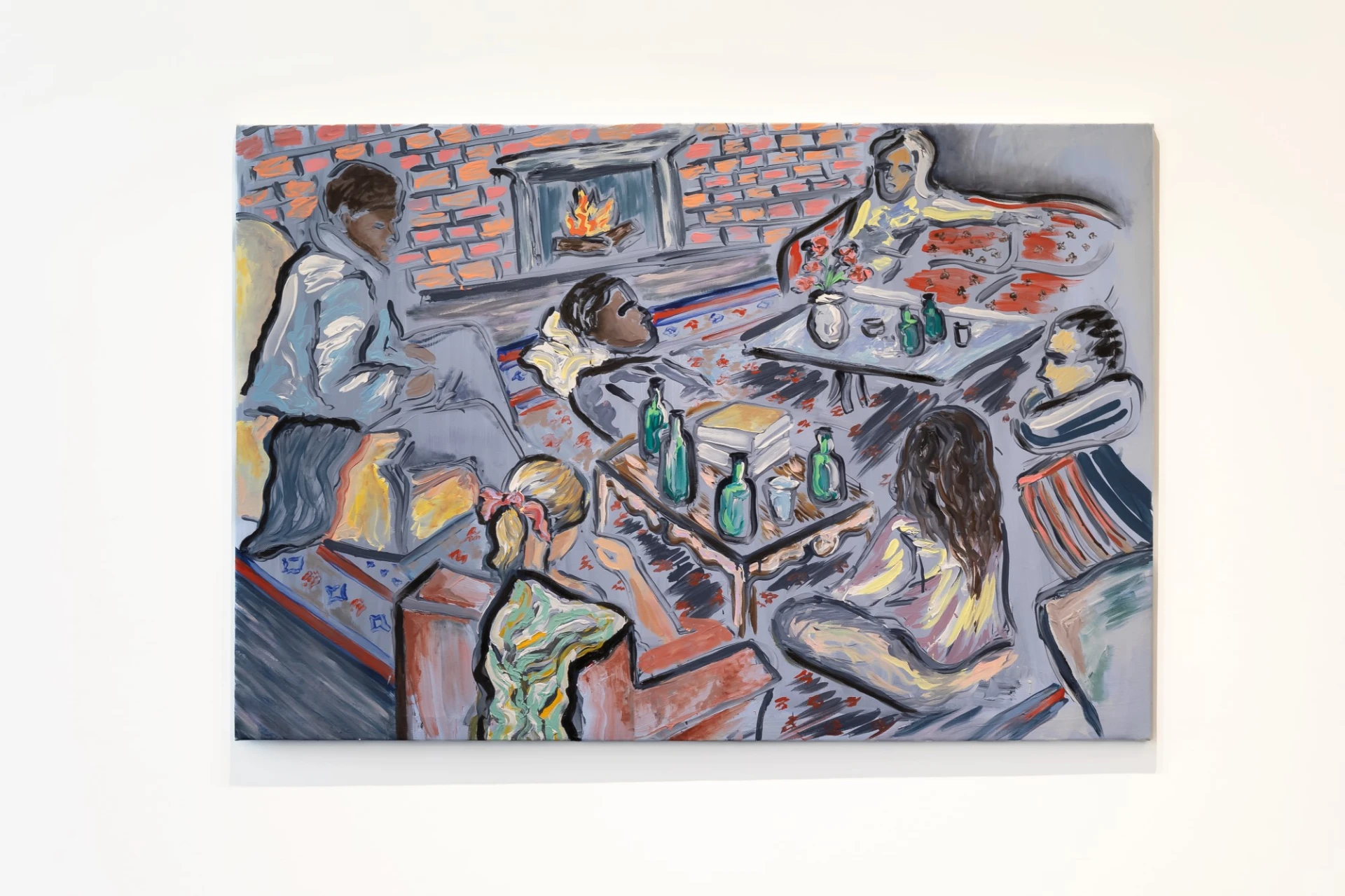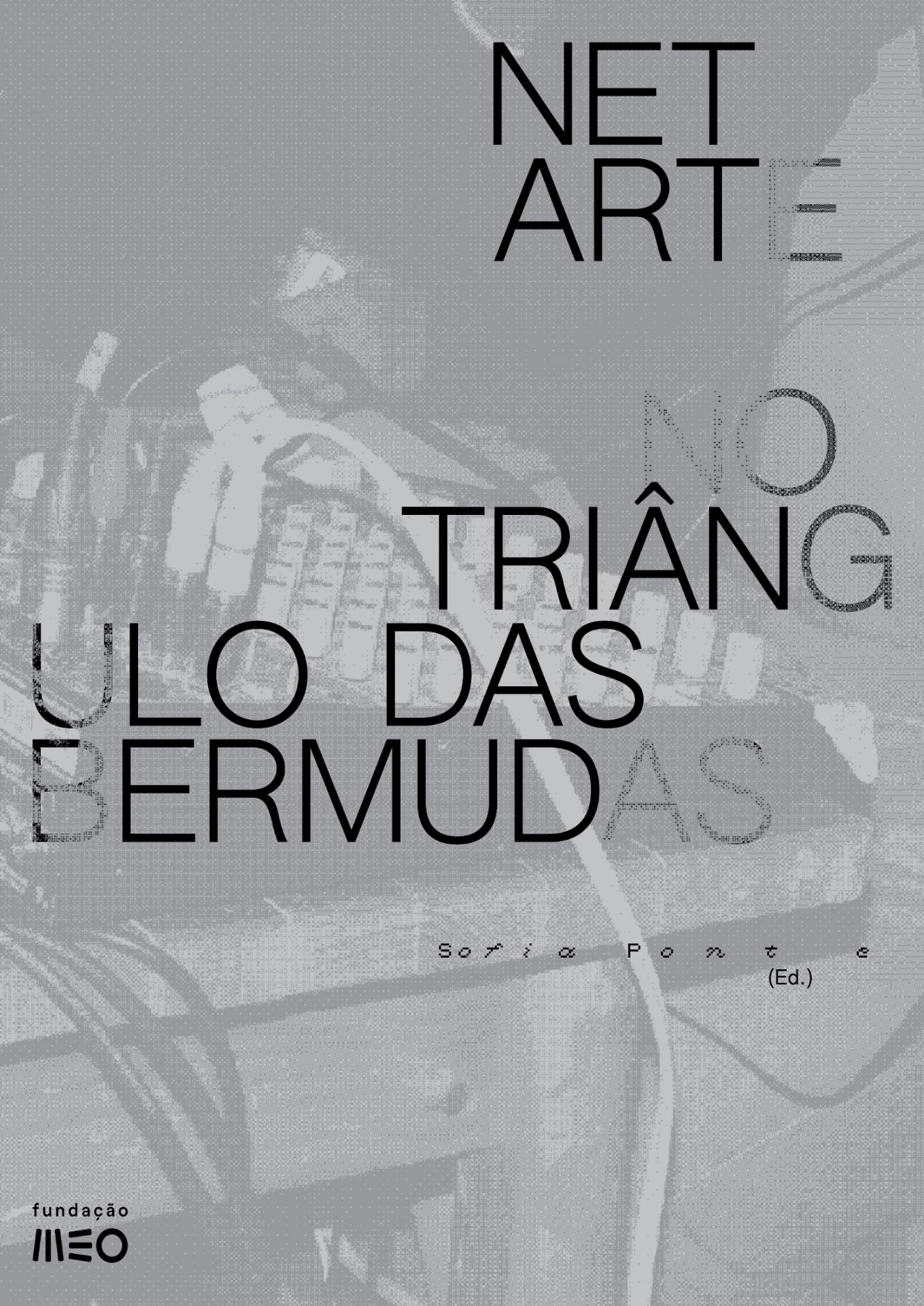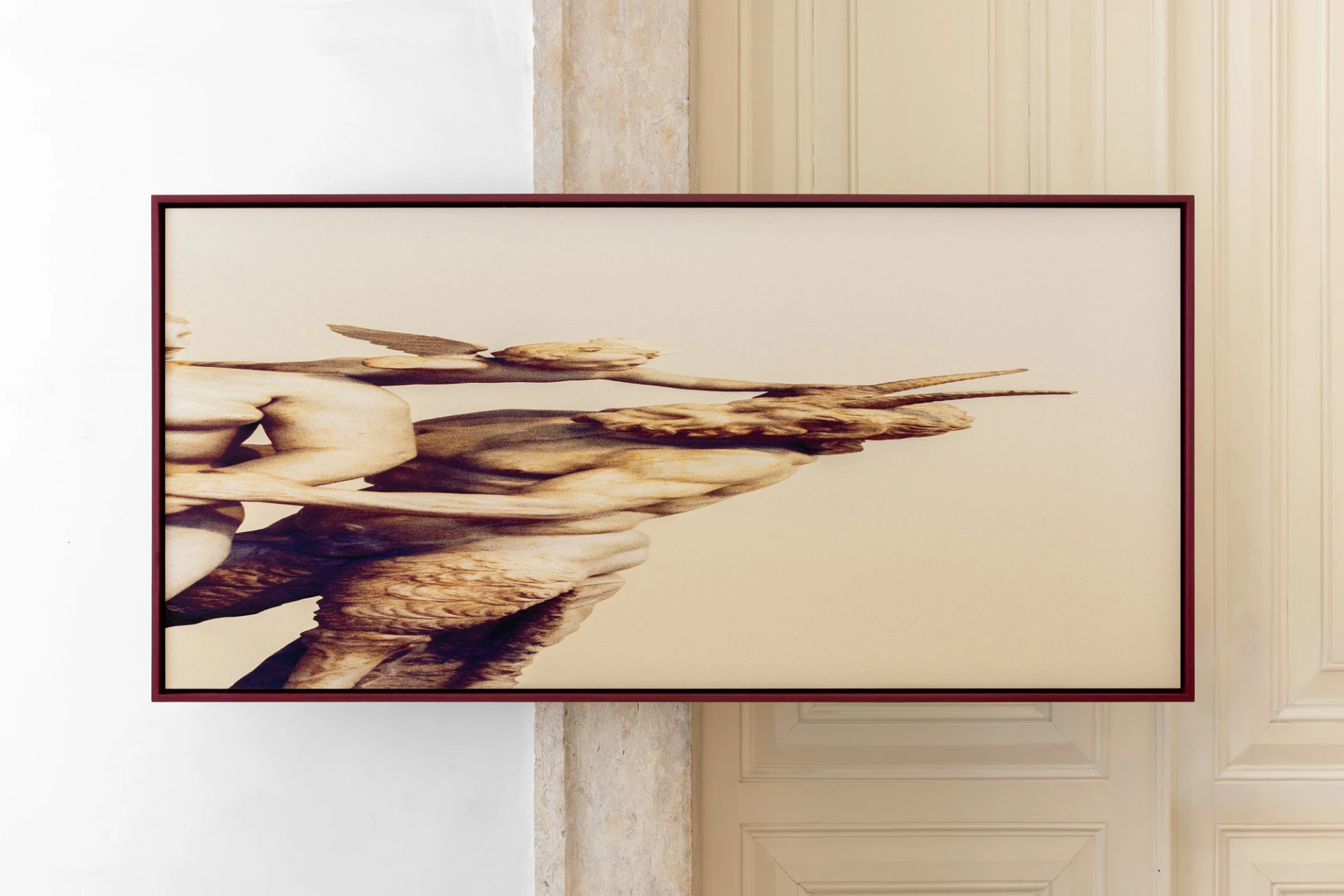article
Notes on "Uma Densa Nuvem de Amor"
It’s been a long time since I’ve come across an exhibition so perfectly aligned with its title. Uma Densa Nuvem de Amor is, in every sense of the word, intense and utterly seductive.
Uma Densa Nuvem de Amor at NOVA University of Lisbon entwines art, academia, and queer thought in a lyrical conversation between research and creation. Gathering works by Ana Pérez-Quiroga, Francisco Mallmann, Hilda de Paulo, João Pedro Vale & Nuno Alexandre Ferreira, Luisa Cunha, Thomas Hirschhorn, Marcus Steinweg, and Horácio Frutuoso, the exhibition emanates from NOVA University’s commitment to equality.
Love is approached on an existential plane, as both a longing to express it and a desire for it in its most intense form. Returning to the classical myth, Eros’s arrow pierces the heart, opening a hollow in the body that becomes a new source of pain. It is only in the presence of pain that we can truly speak of existence. When Deleuze defines love as a ‘mixture of bodies,’ he addresses this liquid flow, reminding us that the passion of the soul is what truly grants us the power to exist.
Ana Pérez-Quiroga’s flickering red neon piece, Diz que me amas (“Say you love me”), glows like a warning, an intimate demand we often hesitate to voice in daily life. The declaration “I love you” announces an attribution that transcends the body of both the lover and the beloved. The moment love is spoken, it acquires a form of dateability. Within this inscription lies a quiet courage: the simple act of speaking affirms the possibility of truth. Even if people may deceive, love never does.
At the entrance, a large-scale photographic print by João Pedro Vale and Nuno Alexandre Ferreira fills the space with an immediate sense of movement and vitality. The work captures the enlarged expressions of the two artists as they meticulously arrange historical queer figures. Scattered across the work, figures - shouting, dancing, crying out - seem gathered under Nuno and João’s protective wings, in the peak moments of their performances. Together, they form a singular emblem of queer life: fragile yet monumental. João and Nuno’s dignified faces resonate with the closing lines of Hilda de Paulo’s poem, installed beside the piece:
—Ah, saberes transcestrais
Invadam a minha corpa-sobrevivente
E façam dela a sua vontade.
Here, joy becomes a form of resistance, a luminous act of cheer against despair.
This approach also embraces a Spinozist thought that I personally take as a foundation in my own way of engaging with life. According to this thought, sadness immobilizes our power; it confines us to mere reaction.
Joy, by contrast, expands our power, joining with the strength of others and with the beloved object. Through joy, we gain the capacity to act, a capacity that is, in itself, virtue.
Here lies the source of why the queer struggle is regarded as an honourable one.
Negation is nothingness.
The title of the exhibition draws inspiration from a passage in William S. Burroughs’s Queer (1952):
I had a duty to live and to bear my burden proudly for all to see, to conquer prejudice and ignorance and hate with knowledge and sincerity and love.
WHENEVER YOU ARE THREATENED BY A HOSTILE PRESENCE, YOU EMIT A THICK CLOUD OF LOVE LIKE AN OCTOPUS SQUIRTS OUT INK.
Burroughs is an intriguing literary figure. He was never optimistic about the course of the world. He portrayed civilization as an orgy, a carnival of corruption. Recurring themes include drugs, power, control, enslavement, and degradation, but also resistance, the reclaiming of nobility, and freedom. To him, the human body is nothing more than a heap to be used and discarded.
He shatters the existing conventions of literature. For him, words are the enemies of life. Declaring that ‘to speak is to lie,’ he refused conventional speech. Instead, he created the cut-up technique, a collage of materials ranging from newspaper clippings to pages of classical literature. He aimed to move beyond language, to reach the purpose of silence.
Starting from Burroughs’ references, encountering Horácio Frutuoso’s visual poems adds a magnificent duality to the texture of the exhibition. Horácio’s primary material is letters; the elements that shape his works are limitless. He explores the relationship between artistic creativity and play. In doing so, at NOVA University, he brings together appealing titles of theses and articles - published research on “gay,” “lesbian,” “homosexual,” “queer,” and similar topics- within compositions reminiscent of air mass movements and wind maps. These currents of air drift through the exhibition space, and we follow the spiraling whorls around us, invited into a playful transformation into poetry. The fresh pink flowers on the table in front of the cabinet displaying the theses carry the vitality of poetry within them. As if the great poet Lautréamont whispers: ‘poetry is made by everyone.’
In Foucault’s Map, Thomas Hirschhorn presents the invention of a thinking activity that transcends representation. It is a magnificent map for those willing to lose themselves freely. Descartes’s mischievous face is easy to recognize, recalling his famous phrase, “I think, therefore I am.” To move from normality to desire is to detach from knowledge, entering a state of unconscious enchantment. In Thomas Hirschhorn’s work, consciousness is submerged in the depths of the unconscious.
About a century earlier, with Baudelaire, the ‘freedom of desire’ and the ‘sovereignty of poetry’ reached their apogee, yet lasted only briefly. Aesthetic modernism, awakened by the barricades of the 1848 Revolution, gave way after Paris’s last barricades in 1968 to a multitude of ‘postmodern’ theses. 1968 marked the avant-garde’s most resplendent madness and inaugurated a new era in critical thought. In Paris, thinkers like Foucault, Lyotard, Baudrillard, Lacan, Deleuze, Guattari, and Badiou, all immersed in the resistance, sought the historical truth of 1968. They opened up the boundaries of modernity and its offspring: history, society, revolution, utopia, and art.
The stimulating arrows of Foucault’s Map reveal the unsettling excess that inhabits all actions that excite us. Within this chaos emerges a revelation: the moment when sexuality rises to an erotic level in relation to knowledge. I recall Bataille’s assertion that death is a potential erotic experience. As a writer, I envy the map’s reckless, boundless expenditure of energy and desire, a freedom literature so often restrains.
Since childhood, we are taught to shy away from our own desires. Accepting that we and our passions are one takes time. At this point, Luísa Cunha’s invisible work (a “shiu” sound emanating from the ceiling) is heard as an ironic provocation against prevailing social conservatism. Entering and leaving the exhibition accompanied by this sound, we gain a certain courage, a mocking defiance against that internalized pressure of control we are constantly trying to suppress.
Inspirational queer discourses in art have gained momentum, especially from the early twenty-first century onwards. Uma Densa Nuvem de Amor reveals that authority and power may change, yet it is people who redefine meaning. NOVA University provides an exceptional space and resources for these works. What endures is our will to survive and, more importantly, our insistence on existing as we are, without submission, without disguise.
For this reason, I feel moved to conclude this text with the final verses of Hilda de Paulo’s poem:
Porque assim,
escolho amor.
BIOGRAPHY
Ayşenur Tanrıverdi is an Istanbul-based writer, living in Lisbon since September 2022. She studied at Istanbul University and is the author of two published works of literary fiction. A regular contributor to Cumhuriyet, a major Turkish newspaper, where she focuses on Portuguese culture. Her essays and critical texts on theatre, literature, and contemporary art have also been featured in various art magazines.
ADVERTISING
Previous
article

03 Nov 2025
Caos com Carinho, by Mariana Malheiro
By Margarida Alves
Next
agenda

03 Nov 2025
Presentation of the book "Net Arte no Triângulo das Bermudas", November 10th at the National Library of Portugal
By Umbigo
Related Posts



